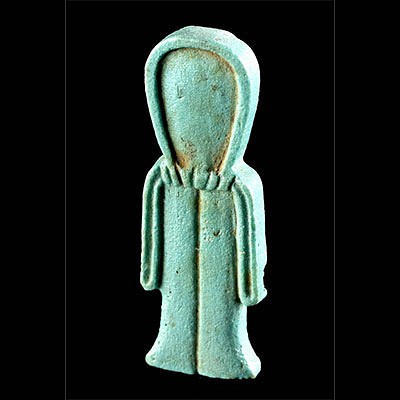Maya Pottery Vessel Incised Glyphs
Lot 82e
About Seller
Artemis Gallery
686 S Taylor Ave, Ste 106
Louisville, CO 80027
United States
Selling antiquities, ancient and ethnographic art online since 1993, Artemis Gallery specializes in Classical Antiquities (Egyptian, Greek, Roman, Near Eastern), Asian, Pre-Columbian, African / Tribal / Oceanographic art. Our extensive inventory includes pottery, stone, metal, wood, glass and textil...Read more
Categories
Estimate:
$2,400 - $3,600
Absentee vs Live bid
Two ways to bid:
- Leave a max absentee bid and the platform will bid on your behalf up to your maximum bid during the live auction.
- Bid live during the auction and your bids will be submitted real-time to the auctioneer.
Bid Increments
| Price | Bid Increment |
|---|---|
| $0 | $25 |
| $300 | $50 |
| $1,000 | $100 |
| $2,000 | $250 |
| $5,000 | $500 |
| $10,000 | $1,000 |
| $20,000 | $2,500 |
| $50,000 | $5,000 |
| $100,000 | $10,000 |
| $200,000 | $20,000 |
About Auction
By Artemis Gallery
Nov 4, 2021
Set Reminder
2021-11-04 10:00:00
2021-11-04 10:00:00
America/New_York
Bidsquare
Bidsquare : Ancient & Ethnographic Art Through The Ages
https://www.bidsquare.com/auctions/artemis-gallery/ancient-ethnographic-art-through-the-ages-7799
Ancient art from Egypt, Greece, Italy and the Near East, as well as Asian, Fossils, Pre-Columbian, Native American, African / Tribal / Oceanic, Fine art, and much more! All categories, all price ranges... all legally acquired and guaranteed to be as described or your money back. Artemis Gallery info@artemisgallery.com
Ancient art from Egypt, Greece, Italy and the Near East, as well as Asian, Fossils, Pre-Columbian, Native American, African / Tribal / Oceanic, Fine art, and much more! All categories, all price ranges... all legally acquired and guaranteed to be as described or your money back. Artemis Gallery info@artemisgallery.com
- Lot Description
Pre-Columbian, Mexico and northern Central America, Maya, Late Classic Period, ca. 550 to 900 CE. A gorgeous pottery vessel presenting a cylindrical body with inward-curving walls and a circular rim, all sitting upon a flat base and enveloped in a creamy beige slip. Boasting an intricately incised decorative program, the exterior of the exterior of the vessel boasts liberal remains of a resist paint design along the exterior walls, as well as a band of incised block glyphs just below the rim. Size: 5.9" Diameter x 8.6" H (15 cm x 21.8 cm)
Residue analysis on vessels like this one show that they were used for drinking chocolate, a hugely popular and ritual practice amongst the Maya, especially the elite. Although we know little about the artisans who made vessels like this one, we do know that cylinder jars are often associated with tombs, sometimes ritually broken. Prominent Maya scholar Michael Coe has connected the scenes depicted upon the most important of these vessels with the sixteenth century Maya written epic, the Popol Vuh, which describes Maya religion and mythology, as this one perhaps does.
These ancient glyphs may convey an important date, a secret message, or simply be part of the vessel's aesthetic program. According to Dorie Reents-Budet, "One of the remarkable characteristics of Classic Maya painted pottery is the use of writing as more than simply a way to communicate ideas. As in the Islamic tradition, Maya artists employed calligraphy as a prime design feature and as an integral part of the total composition… The hieroglyphic texts also were used as compositional devices, placed specifically to help define the internal tensions, balances and divisions within the pictorial field." (Dorie Reents-Budet, "Painting the Maya Universe: Royal Ceramics of the Classic Period", Durham, N.C.: Duke University Press, 1994, page 12)
Provenance: private Hawaii, USA collection, acquired in 2004; ex-Roy Oswalt collection, New Mexico, USA
All items legal to buy/sell under U.S. Statute covering cultural patrimony Code 2600, CHAPTER 14, and are guaranteed to be as described or your money back.
A Certificate of Authenticity will accompany all winning bids.
PLEASE NOTE: Due to recent increases of shipments being seized by Australian & German customs (even for items with pre-UNESCO provenance), we will no longer ship most antiquities and ancient Chinese art to Australia & Germany. For categories of items that are acceptable to ship to Australia or Germany, please contact us directly or work with your local customs brokerage firm.
Display stands not described as included/custom in the item description are for photography purposes only and will not be included with the item upon shipping.
#168312Repaired from several large pieces with restoration to rim and along break lines. Expected nicks and abrasions, especially on interior, all commensurate with age. Otherwise, excellent with liberal remains of resist paint design and impressive preservation of detail on glyphs.Condition
- Shipping Info
-
All shipping is handled in-house for your convenience. Your invoice from Artemis Gallery will include shipping calculation instructions. If in doubt, please inquire BEFORE bidding for estimated shipping costs for individual items.
-
- Buyer's Premium



 EUR
EUR CAD
CAD AUD
AUD GBP
GBP MXN
MXN HKD
HKD CNY
CNY MYR
MYR SEK
SEK SGD
SGD CHF
CHF THB
THB















